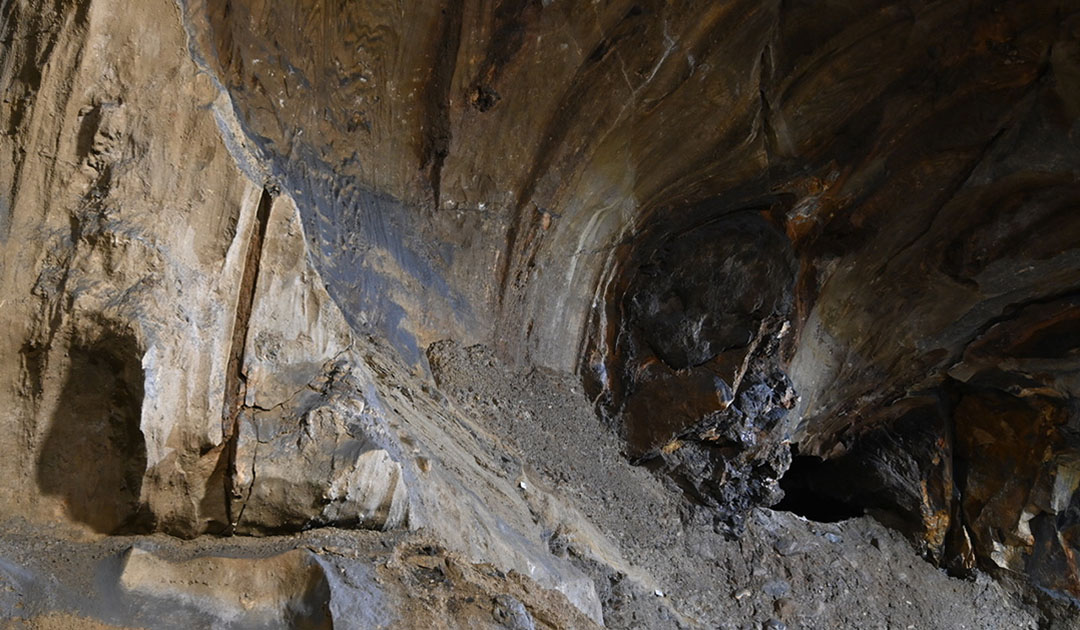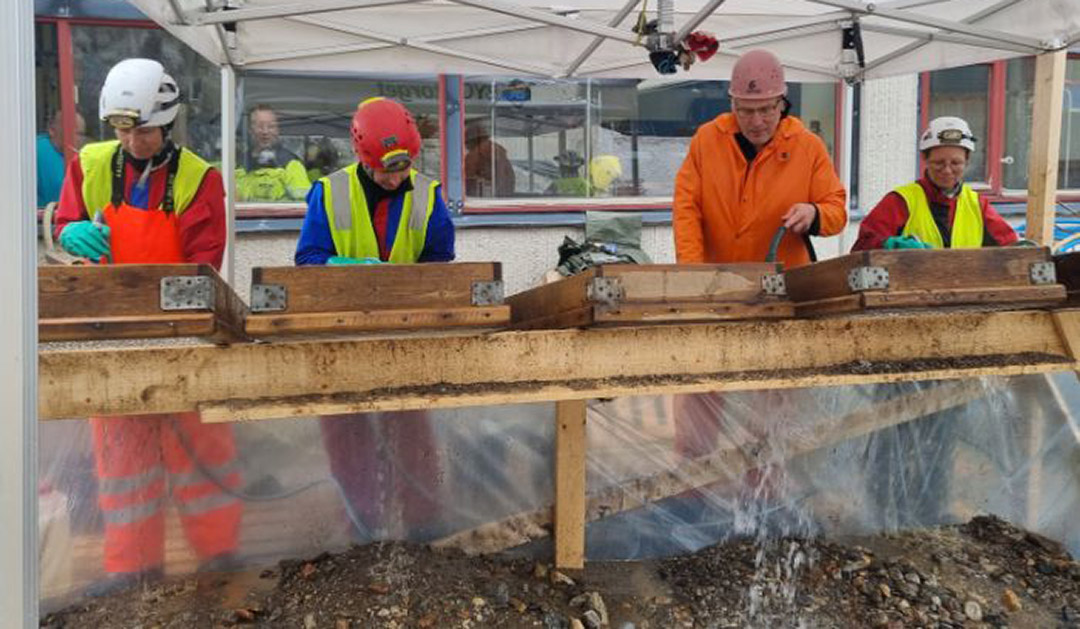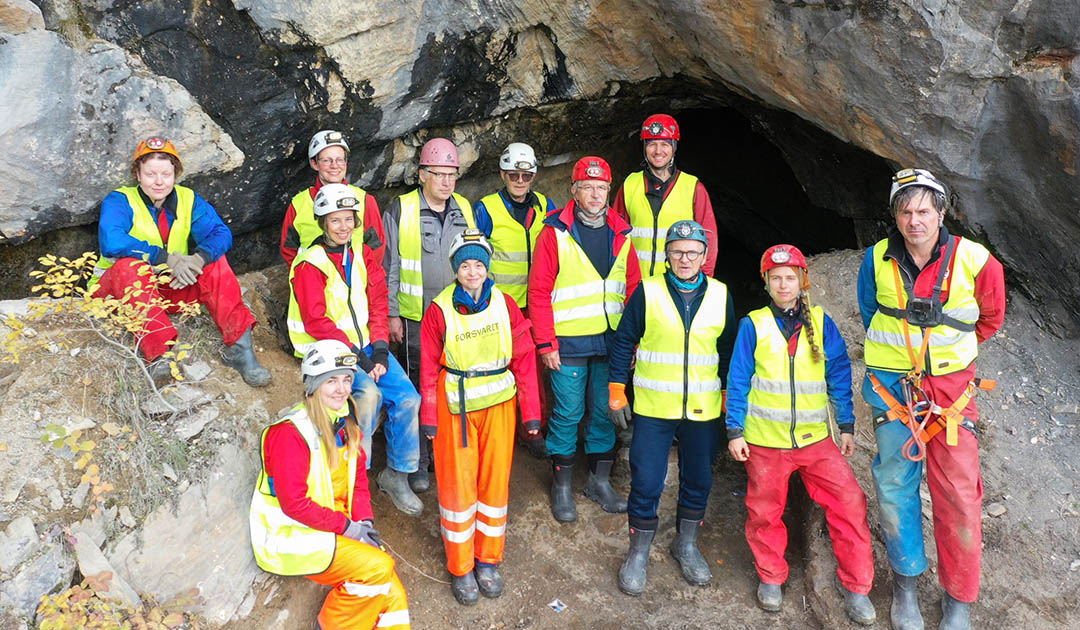
Archaeological evidence of high latitude wildlife from before the last ice age is extremely rare due to erosion by the massive glaciers.Nevertheless, Stein-Erik Lauritzen, professor of speleology, made a unique discovery 30 years ago: he found the remains of a polar bear at least 70,000 years old in a cave system under the village of Kjøpsvik in northern Norway. This was an extremely surprising find, as the last ice age in northern Europe lasted from about 115,000 to 12,000 years before today. What other archaeological treasures are hidden in the cave system will be revealed by the “EvoCave” project, which started with the first excavation in September.
After many years of writing funding proposals, researchers from the University of Oslo, the University of Bergen, and other universities and institutes have now been awarded 12 million Norwegian kroner (about 1.2 million euros) for their three-year “EvoCave” project, which aims to study in detail sediments from the cave system that are up to 122,000 years old. The first four-week excavation in the karst caves “Norcemgrotta” and “Nygrotta” at 68°50’N in Narvik, northern Norway, has already been completed by the interdisciplinary, international team of archaeologists, geologists, biologists and others, and they have made a find. This cave system is described as unique in the world.

The researchers carefully worked their way through the numerous layers of sand and gravel in the caves, each representing an era of prehistory. They sieved the sediments and extracted bone material and other traces. In the upper sediment layers they found numerous small vertebrae, tail bones, jaws with and without teeth, and even some skulls of small mammals that have yet to be identified. At a depth of five to six meters, the finds became more exciting: here the researchers came across more bone material – tiny pieces – that could be up to 100,000 years old, according to Trond Klungseth Lødøen, an archaeologist at Bergen University Museum and head of fieldwork in the caves. The exact identification of the animals and dating will be done in the laboratory. Initial research has shown that the material is at least 80,000 to 90,000 years old. According to Lødøen, however, it could also be up to 122,000 years old. But how is it that so many animal traces can be found from this period? Northern Europe was then under a thick ice sheet, according to the current general understanding.
The new findings show that there must have been several warm phases with a diverse fauna during the so-called Weichselian Ice Age, says Lødøen. Apparently, the extent of the ice was smaller at times, allowing animals to settle. This would also refute the notion that the kilometer-thick glaciers obliterated all traces of life. However, the sediments in the caves under the village of Kjøpsvik, which have preserved traces of prehistoric life well, are an exception. As a result, very little is known in the Nordic countries about biodiversity more than 100,000 years ago, Lødøen explains. Probably the most spectacular finds of bone material the researchers have made so far are from prehistoric wolves, polar bears, seals, cod and guillemots.
Biologist Sanne Boessenkool from the Department of Life Sciences at the University of Oslo hopes to use genetic material from the bones to find out how the animals’ DNA changed when they entered a warm phase. This could give them answers about what happens to the genetic material of animals facing climate change today, she says.

By exploring the caves, of which there are tens of thousands in the region, researchers also have the opportunity to learn more about conditions during the Ice Age and the biodiversity and way of life of the animals. And with this information, conclusions can be made about the climate at the time that could be relevant to climate change today. “By understanding how biodiversity changed during earlier periods with cold and warm cycles, we will gain important insights into the resilience of species and ecosystems to climate change today,” Lødøen explains.
After this first excavation, the researchers now have a lot of work to do in their respective laboratories. Archaeologist Lødøen secretly hopes to find traces of humans as well. In a blog entry, the researchers reported finding small pieces of charcoal that could be evidence of human settlement. Next year, the team will conduct a second excavation, which will also investigate the Fauske cave area.
Julia Hager, PolarJournal





